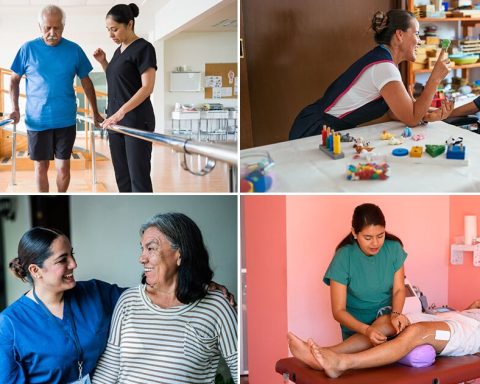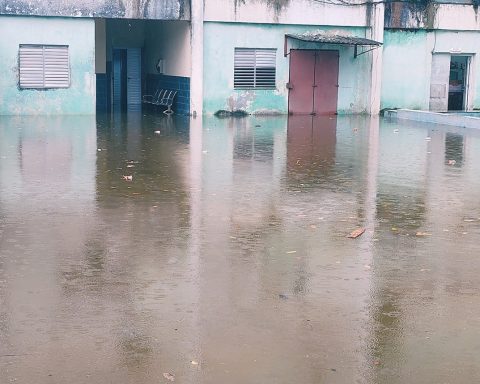The Health Care Coordination and Continuity Law initiative presented by Ivonne Cisneros Luján now aims to amalgamate the circus with which we will go to the Nordic health promised by the Federal Executive into three tracks.
The first clue is the health services provided by Social Security, which is very successful according to Ivonne, with human and hospital resources to spare, which could be used by other systems. On the second track, INSABI and the State Health Services act, which have not been successful in the goals set for health for well-being. On the third track is the IMSS-Wellness, now the new vehicle to achieve universal access to health services.
The proposed Care coordination and continuity would reduce, according to the author, the uncertainty of public servants to exchange services and supplies, eliminating the risks of incurring in administrative responsibilities, with the gain that would not have a budgetary impact, since it would only be an exchange between the public instances.
To guarantee free medical care for people according to their health needs, with opportunity, quality and regardless of their entitlement status, as well as continuity of care, avoiding interruptions in their treatment, Mexicans must go to the first level of care medical unit that has been assigned to you or in case of an emergency, to the emergency room of the hospital closest to your home or where the emergency occurred.
The IMSS-Well-being will have the responsibility of guaranteeing its necessary transit, through the levels of care and diagnostic services, as well as guaranteeing adequate care coordination between the health professionals who intervene in order to achieve comprehensive, timely care and without interruptions through the integrated networks of health services -RISS- that will be commanded by the IMSS, which has the largest infrastructure at the national level.
All health subsystems may optionally adhere to the RISS by signing agreements. All people must be informed of the RISS to which they belong and the rules for transitioning to more complex services.
There will be a single national medical care tabulator to be charged between the institutions that will refer patients treated through clinical practice guidelines and the NOMs in terms of medical care with a compendium of medicines and supplies adjusted to the levels of care.
The tabulator will be done by the SCHP with the participation of the federal institutions and the Ministry of Public Administration. The single clinical file will circulate among the institutions with the reference and counter-reference mechanisms already in paper or digital format.
It is proposed that the supplies of the health sector and medicines be registered in real time and thus formulate the consolidated acquisition since everyone is obliged to use a single application system.
In 180 business days after the publication of this Law in the Official Gazette of the Federation -DOF- 1) Public institutions must adjust their regulatory frameworks; 2) the IMSS will create the RISS and make them public in the DOF; 3) The SHCP will publish the single national health care tabulator; 4) The IMSS-Wellness will design the measurement instrument to be applied in the perception survey on continuity of care in users; 5) The application of the previous survey will begin sixty days after its approval -without specifying the time for its approval-; and 6) Design the single national drug and supply system, putting it into operation 90 days later.
There is a popular saying that says “If there are no midgets, there is no circus” and it clearly applies to this Law that imagines a single tabulator in a three-ring circus to cover the health needs of the 130 million Mexicans.
Let’s see the Unit Costs by Level of Medical Care updated to the year 2022 of the IMSS (DOF 12/21/2021) for the determination of tax credits derived from constitutive capitals, improper registrations and care for non-entitlers, in order to dimension what it would imply in budget terms with the assumption of all services, all illnesses and close to your home.
At the First Level of Care: Family Medicine Consultation $969, Dental $916, Physical and Rehabilitation $1,238; Urgent Care $844 and Cures $502; Clinical Laboratory Study $122, Radiodiagnosis $454, Ultrasonography $609; Ambulance Transfer $667, Hemodialysis Session $5,580, Chemotherapy Session $7,336, Tocosurgery Intervention $14,496, Patient Day in Hospitalization $10,761, Surgical Intervention $10,739, Psychological Therapy $1,411, Endoscopy Study/Procedure $4,081.
In the Second Level of Attention: Consultation of specialties $1,559, Urgent Care $1,737; Day Patient in Hospitalization $10,761, Incubator $10,761, Intensive Care $54,053, with Mechanical Ventilation $39,601; Nuclear Medicine Study $1,164, Electrodiagnosis $779, Axial Tomography $2,964, Magnetic Resonance $4,791; Radiotherapy Session $2,853; Surgical Intervention $33,340; Ambulance Transfer $2,819; Hemodynamic Study/Procedure $54,178; Lithotripsy service $4,490.
At the Third Level of Care: Consultation of Specialties $2,461; Urgent Care $3,740; Physical Medicine and Rehabilitation Consultation/Session $3,018; Surgical Intervention $48,143; Ambulance Transfer $7,561; Blood Bank Service $405; Donor Consultation $349; Lithotripsy service $4,490.
These IMSS prices are much higher than the rest of the institutions responsible for the care of people who are not entitled to social security and, of course, would have a significant budgetary impact of at least 3 points more than GDP. For this reason, the zero rejection policies for the care of the mother-child binomial are the only ones that have been affirmed between Institutions in recent years.
At that price of IMSS Unit Costs, I am certain that many individuals and companies from the private and social assistance sectors could offer their services with quality so that the proximity and opportunity of medical care, including emergencies, is closer to the citizen. The experience during the COVID-19 pandemic showed that there is another option incorporating these sectors that are also part of the National Health System.
A serious analysis of where we want to take health care in our country, in terms of organization and financing, is required to make the desired universal health coverage a reality. We are ready in National Action to open the conversation.
*The author is a medical surgeon, specializing in public health, with a doctorate in health sciences and public administration, and was re-elected as a deputy of the PAN parliamentary group in the LXIV Legislature; he is also director of the Miguel Estrada Iturbide Foundation.















